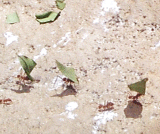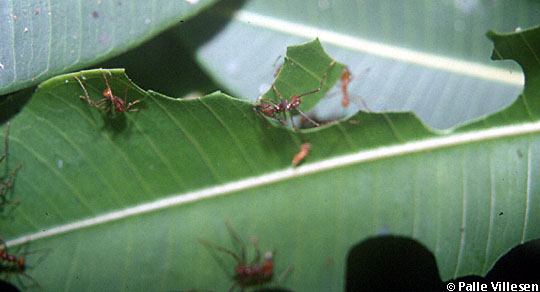
[picture courtesy of Ant colony]
SCIENTIFIC NAME : Atta
texana [There are many different
species of leafcutter ants all over the world. They all have the
basic same features with several exceptions when adapting to their enviorment.
This is the name of the leafcutter species located at the FortWorth Zoo.]
Their nest can go as long as 8-15ft under ground. It can cover up to 3,000 to 4,500 sqft.
collect all those leaves and other debris and form a nest that grows fungus.
They do eat leaf juice and drink plant nectar. But their main source
source of food is fungus.
Coloring: They range from a dark red to a rusty brown
---------------------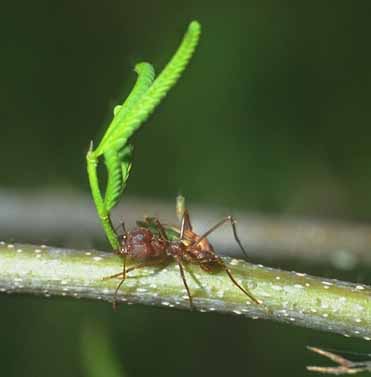 [picture
courtsey of Extension Entomology, Department of Entomology, TexasA&M
University]
[picture
courtsey of Extension Entomology, Department of Entomology, TexasA&M
University]
Basic body description:They
appear to be a relatively large ant with a spiny body and much longer legs.
The queen can have wings. They have 4 legs on each side and two parts of
a cast
---------------------on each side of their face.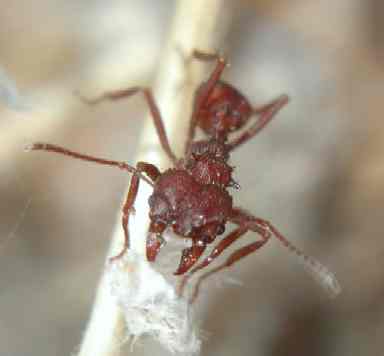 [picture
courtesy of tightloop.com] ------------------------
[picture
courtesy of tightloop.com] ------------------------
They use these casts to strip to strip leaves off 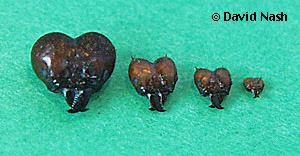 -------------
-------------
of plants. The casts vary in size depending
their job function.[see pic][picture
courtesy of David Nash]
Size: The queen
averages 3/4in to 2in long. The workers range from 1/4in to 1/2in. The
larger ants with larger casts
do the leaf cutting. The smaller ants with the smaller casts carry,clean
and cut the pieces of a leaf. Click
here to see different ant sizes.
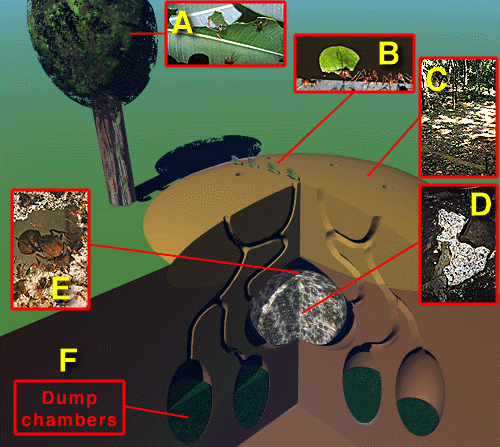
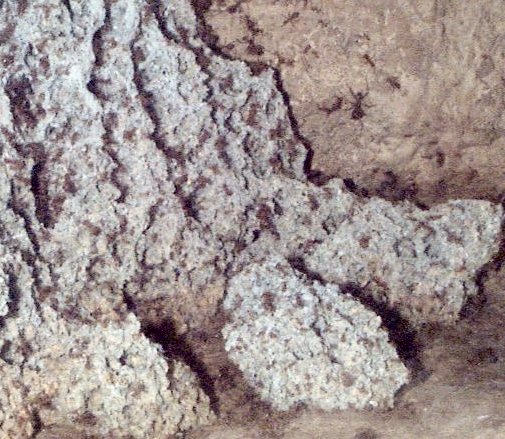
[picture coutesy of David Nash]
| A : Parts of leaves are cut from vegetation. | D: The workers make the leaves into mulch, which is then used in the colony's fungus garden. |
| B : Leaf sections are carried away in trails. | E: The Queen sits among the fungus garden laying eggs. When the larva emerge they will feed of the fungus and be cared for by special workers. |
| C: The sections are taken back to the nest. | F: When the nutrients have been removed from the leaf material, the waste is placed in these dump chambers. Dead ants and dead fungus is also placed here. |
The workers protect her, the colony and delivery food.
Their are three major types of wokers.
--------------------------------------
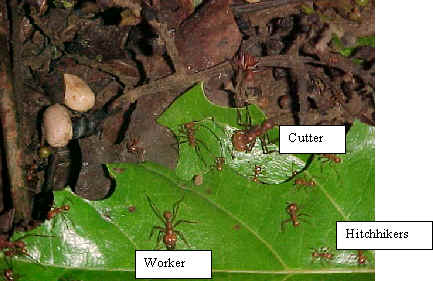 ------------
[picture courtesy of Woodrow Teachers Foundation]
------------
[picture courtesy of Woodrow Teachers Foundation] Cutter: The larger ants that actually cut the leafs off.
Worker: Average size ants that transport the pieces to the colony.
Hitchhikers: Juvenile ants that clean and cut the pieces while riding on top of other ants.
by chance another queen comes by, the colony will die off.
- Deforestation is a major problem. It causes this species to spread and become a
pest problem. They do approx. 1$ billion in damage in USA each year.
